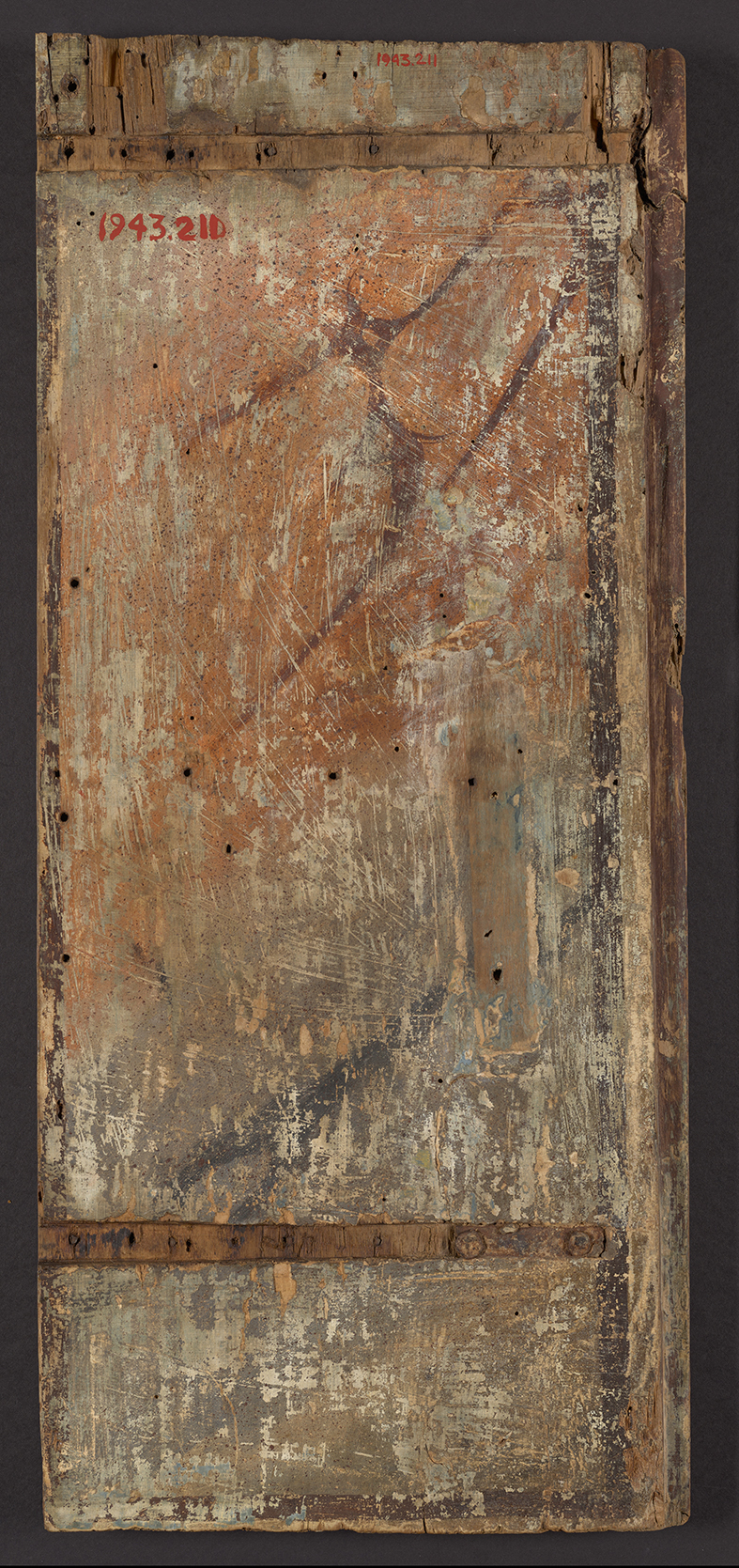For more on this painting, see Lippo d’Andrea, Saints Elizabeth of Hungary and Anthony of Padua.

The panel, of a vertical wood grain and 2.0 centimeters thick, was drastically cleaned in 1962–63, revealing scattered losses throughout the shadowed areas of the figures’ draperies and in the pavement; the dark blue background and pigments mixed with lead white are better preserved. The faces and hands have been abraded to the priming layers of paint and the gilt haloes are worn, while the mordant gilding on Saint Louis’s staff, on the fleur-de-lis-decorated hem of his cope, on his miter, and on the binding of his book is largely intact, though it has flaked irregularly. The mordant gilding of the crown at his feet is nearly obliterated. Scars from six nails align across the top of the panel approximately 6 centimeters from the top edge, and seven nail scars align across the bottom of the panel approximately 13 centimeters from the bottom edge. These nails secured iron strap hinges, 15 millimeters wide, across the back of the panel. Two channels are cut into the surface of the back of the panel to receive these hinges, but only 7 centimeters of the length of the bottom hinge, secured by two nails, are preserved. The hinge nails provoked three partial splits in the panel at the top and two at the bottom that have each resulted in minor paint loss. The back of the panel (fig. 1) is painted with a faux marbre pattern, bordered by a black band. This band is missing at the top, indicating that the panel has been truncated and has been reduced in width by 8 to 14 millimeters at the left (the right edge viewed from the front). The bottom has been trimmed by approximately 8 millimeters. The right edge (the left edge from the front) is original and preserves a recessed flange of wood 2 centimeters wide that originally rested beneath a corresponding flange on the other shutter, indicating that this wing closed first. A handle, covering an area of approximately 16 by 3 centimeters, was attached to the back by two nails and situated 6 centimeters from the right edge (from the back) and 22 centimeters from the bottom edge.